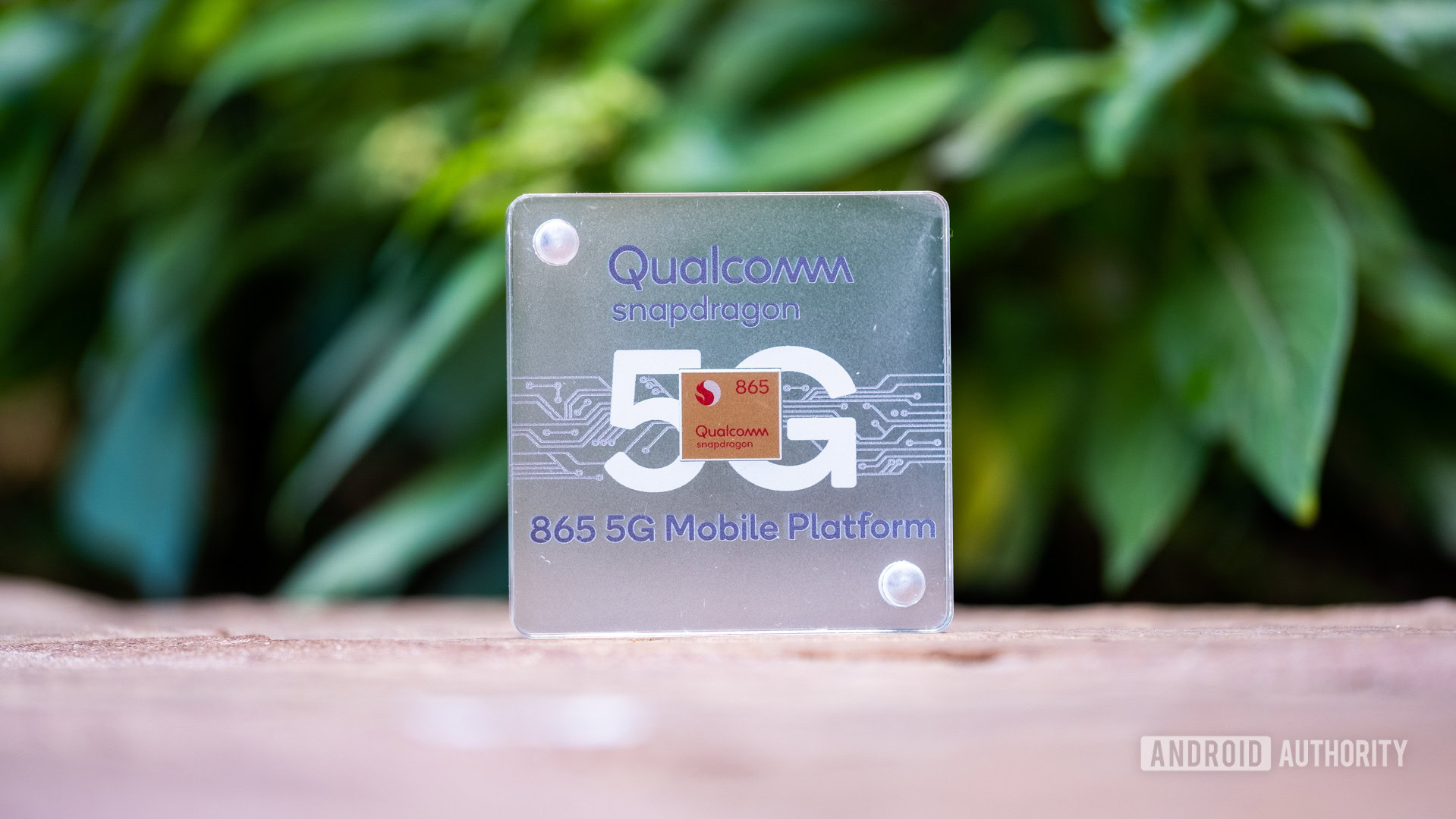Affiliate links on Android Authority may earn us a commission. Learn more.
Why there's no integrated 5G modem in the Snapdragon 865
Published onDecember 4, 2019

The lack of an integrated 5G modem inside Qualcomm’s Snapdragon 865 processor has drawn criticism from some pundits, especially given that rival chips boast this feature and Qualcomm has an integrated 5G modem in its mid-range Snapdragon 765. Ideally, an integration solution provides the best possible area, cost, and energy efficiency, but another year with an external solution certainly isn’t the disaster some are insinuating.
Speaking at a roundtable during the Snapdragon Tech Summit, Qualcomm President Cristiano Amon laid out the reasons why the Snapdragon 865 relies on the Snapdragon X55 external modem for its 4G and 5G connectivity.
Offering a truly flagship 5G experience
Primarily, the Snapdragon 865 utilizes an external rather than internal 5G modem so as not to compromise on the capabilities of Qualcomm’s latest premium-tier platform. “When we look at the X55 and the ability to deliver the maximum capabilities across all of the feature set, [external] looked like the right approach,” explained Amon, “especially when we looked at the size of the modem, as well as the performance of the application processor.”
In other words, the features and capabilities of the X55 require the modem to be a certain size and consume a certain amount of power. When integrating any piece of silicon, area size and power have implications for other components inside the chip. For example, a large modem might mean less space for high performance CPU of GPU silicon, not to mention extra heat that can impact the peak and sustained performance of nearby components.
Integration is more efficient, but Qualcomm is targeting maximum performance for both its processor and modem.
“Our view on the flagship [tier] is how can we deliver the best possible performance and the best that 5G can do? That’s what the X55 does,” said Amon. For Qualcomm, keeping the modem external means no compromises for both 5G capabilities and the Snapdragon 865’s computational performance.
Integration comes with costs
Amon also noted that “some companies that rushed into integration” had significantly pared down the performance of their 5G modems. For example, HUAWEI’s external Balong 5000 5G modem supports sub-6GHz and mmWave spectrum, with download speeds up to 7.5Gbps. The Balong modem integrated into the Kirin 990 5G SoC is sub-6GHz only and tops out at 2.3Gbps. It’s the same with Samsung’s Exynos 980 SoC, which is missing mmWave support and peaks at 3.6Gbps with dual mode connectivity.
However, Samsung’s external Exynos 5100 modem part hits 6Gbps downloads with mmWave tech in tow, while the Exynos 5123 hits 7.35Gbps. Samsung is planning to pair its Exynos 990 with an external Exynos 5123 modem to hit blazing fast speeds and mmWave support. It’s clear that efforts to integrate 5G capabilities require compromises to performance.
Samsung's Exynos 990 will also be paired with an external modem to hit speeds above 7Gbps.
To see what Qualcomm has accomplished on the integrated side, look to the Snapdragon 765 and its Snapdragon X52 modem. The X52 supports 3.7Gbps download speeds and, perhaps more importantly, mmWave and dynamic spectrum sharing. It’s as good, if not better than its competitors. The X52 is clearly a very capable integrated part, but still operates at almost half the bandwidth of the X55. You still need to go external to find the most capable 5G modems on the market.
External needn’t be inefficient

While Qualcomm is clearly keen to talk up its capabilities and downplay the lack of integration, the Snapdragon X55 is a genuine step up from the X50 found in today’s devices.
Peak download speeds go from 5 to 7.6Gbps. The X55 also introduces support for 5G FDD spectrum and Standalone 5G networks. Importantly, it’s a dual-mode 4G and 5G modem, offering dynamic spectrum sharing for improved speeds and network transparency while the industry transitions and expands 5G coverage.
Interestingly, the Snapdragon 865 and X55 modem pairing is more efficient at 4G LTE than the Snapdragon 855’s integrated X24 modem. Amon explains that “the architecture has not compromised battery life” and the new solution actually offers a better day of 4G use than its predecessor. Using an external modem won’t have a negative impact on battery life when you’re in an area with only 4G coverage. 5G power consumption is clearly more demanding, but battery and networking performance will improve in 2020 smartphones.
As for when we’ll see an 800-series Snapdragon with an integrated modem? Apparently, we’ll have to return to Maui next year to find out. It will be 2021 before smartphones offer both premium-tier 5G performance with the area and energy benefits of an integrated chip.